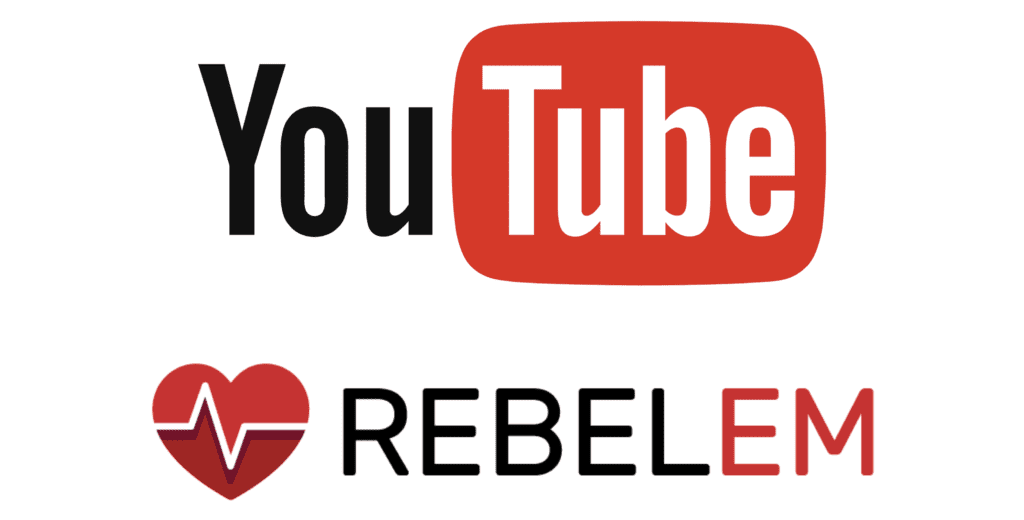
 Shock is defined as circulatory failure leading to decreased organ perfusion. In a shock state there is an inadequate delivery of oxygenated blood to tissues that results in end-organ dysfunction. Effective resuscitation includes rapid identification and correction of inadequate circulation. the finding of normal hemodynamic parameters (i.e. normal blood pressure) doe not exclude shock itself. In this 11 minute and 40 second video, I will review the management shock – part 1 (The goals of shock management, signs of adequate organ perfusion, the etiology of shock, and some basic terminology).
Shock is defined as circulatory failure leading to decreased organ perfusion. In a shock state there is an inadequate delivery of oxygenated blood to tissues that results in end-organ dysfunction. Effective resuscitation includes rapid identification and correction of inadequate circulation. the finding of normal hemodynamic parameters (i.e. normal blood pressure) doe not exclude shock itself. In this 11 minute and 40 second video, I will review the management shock – part 1 (The goals of shock management, signs of adequate organ perfusion, the etiology of shock, and some basic terminology).
[embedyt] https://www.youtube.com/watch?v=I4kfWKsQf0Y[/embedyt]
Also Be Sure to Checkout our YouTube Channel

The goal of shock is restore and maintain end organ perfusion!!!
- Each organ has a critical perfusion pressure
- Cerebral Perfusion Pressure 50-70 mm Hg
- Coronary Perfusion Pressure 60-80 mm Hg
- Renal Perfusion Pressure 65-70 mm Hg
- Optimize hemodynamics: CO=SV x HR, SVR
- Balance perfusion to vital organs with over vasoconstriction to prevent ischemia (ie gut ischemia)
- Literature would support MAP 65 mm Hg (at least to start) then frequently reassess your patients perfusion as some patients may need higher MAP to maintain perfusion however some may need less
Some (not so perfect) signs for adequate organ perfusion include:
- Mental Status
- Capillary refill
- UOP
- Mottled extremities
- Lactate (See the Basics of Shock)
Etiology of Shock (Based on the SOAP II Trial):
- Obstructive Shock (2%)
- Hypovolemic Shock (16%)
- Cardiogenic Shock (16%)
- Distributive Shock (66%)
- Septic (62%) – most common shock in the ICU
- Non-septic (4%)
Terminology:
-
Vasopressor: induce vasoconstriction
- Phenylephrine, Vasopressin, Angiotensin II, Selepresin
- Inotrope: increase cardiac contractility
-
Inopressor: Induce vasoconstriction & increase cardiac contractility
- Norepinephrine, Dopamine, Epinephrine
-
Inodilator: increase cardiac contractility & cause vasodilation
- Dobutamine, Milrinone, Levosimendan, isoproterenol
Important Receptors:
- Alpha 1: On the vasculature and cause vasoconstriction
- Beta-1: On the heart and cause inotropy and chronotropy
- Beta-2: On the vasculature & lungs and cause vasodilation and bronchodilation
- V1: On the vasculature and cause vasoconstriction
- Angiotensin II: On vasculature and cause vasoconstriction
References:
- Walsh M et al. Relationship between intraoperative mean arterial pressure and clinical outcomes after noncardiac surgery: toward an empirical definition of hypotension.Anesthesiology 2013. PMID: 23835589
- De Backer D et al. Comparison of Dopamine and Norepinephrine in the Treatment of Shock. NEJM 2010. PMID: 20200382

Critical Care Education Curriculum
Please watch Critical Care Fundamentals – Mgmt of Shock Part 2A & Mgmt of Shock Part 2B as well
Mgmt of Shock – Educational Reinforcement Material
Mgmt of Shock – Supplemental Educational Material
Post Peer Reviewed By: Salim R. Rezaie, MD (Twitter: @srrezaie)
The post Critical Care Fundamentals: Management of Shock Part 1 appeared first on REBEL EM - Emergency Medicine Blog.
